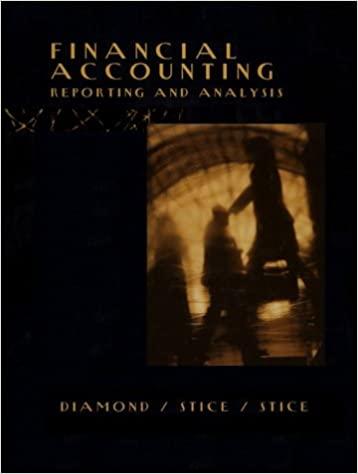Question
Fairfield Office Supplies Inc. has a regional chain of office supply stores in the Midwest. Fairfield is trying to compete with the large nationwide office
Fairfield Office Supplies Inc. has a regional chain of office supply stores in the Midwest. Fairfield is trying to compete with the large nationwide office supply companies. It is January of 2023 and Fairfield needs to make some capital budgeting decisions this year. They need to decide whether to replace their computerized inventory system or upgrade the old one, whether to purchase two stores from a sole proprietor or not, whether to keep, abandon or modernize one of the stores, which new copiers to purchases and a few other small projects. The company is under some pressure and has a strict capital budget of $10 million, so they need to be careful as to which projects they choose.
Examine the following book-value balance sheet for Fairfield Office supplies for the year 2022. What is the capital structure of the firm based on market values? The preferred stock currently sells for $7.00 per share and the common stock for $16.00 per share. The preferred stock pays a dividend of $.70 per share, the Common Stock paid a dividend of $1.10 last year, and the firm is expected to continue to grow at the same rate as the net income for the past five years, The rate on 90 day treasuries is 1.50%, the beta of the stock is 1.45, the market risk premium is 8%, and the firms tax rate is 40%. The float costs are as follows: Debt: 10% of par only for the amount borrowed under $1.1 million (after that it is 0%), preferred: $0.6 per share and Common: $1.75 per share. The firm has paid out 30% of its net income as dividend in the past five years and is expected to continue. If the company borrows over $1.1 million then the cost of debt goes from 9.0% to 11% (including flotation) and if the company borrows over $2.2 million the cost goes to 13% (including flotation). Find the Marginal costs of capital for Fairfield. Fairfield tax rate is 40%. (For Required return of retained earnings use an average of the DCF method and the CAPM method).
| Book Value Balance Sheet for 12/31/22 (all values in millions) | |
| Assets | Liabilities and Net Worth |
| Cash and short-term securities $1.5 | Bonds, coupon =9.5%, paid $15.0 Annually (maturity = 20 years, Current yield to maturity = 9.0%) |
| Accounts Receivable 3.0 | Preferred stock (par value $4.5 4.5 Per share) |
| Inventories 6.0 | Common Stock (par value $.5) 1.50 |
| Plant and equipment 35 | Additional paid in stockholders 6.00 Capital |
|
| Retained Earnings 18.5 |
| Total $45.5 | Total $45. |
| Years | 2022 | 2021 | 2020 | 2019 | 2018 |
| Net Income (in millions) | 5.11 | 4.80 | 4.40 | 4.10 | 3.90 |
3. Keep, Modernize or Abandon store
Fairfield is considering abandoning a store with no debt. Fairfield believes they could sell the store for $310,000 after taxes or it could be kept and it will produce after-tax cash flows of $95,000 for each of 5 years. In addition, the possibility of modernizing the store with additional after-tax cash flow consequences solely for the modernization are as follows:
0 1 2 3 4 5
$68,000 $10,000 $23,000 $21,000 $20,000 $16,000
Should Fairfield abandon, keep or modernize?
4. Purchase of copy machine
Fairfield is considering two alternative copy machines to purchase. Fairfield will need to purchase three machines for each of its thirty stores. Machine A has an expected life of 4 years, will cost $29,000, and will produce net cash flows of $12,700 per year. Machine B has an expected life of 8 years, will cost $36,500 and will produce net cash flows of $9500 per year. Fairfield plans to operate the machines for 8 years. Inflation is expected to be zero and depreciation is already taken into account in the cash flows. Which new machine should Fairfield purchase?
5. Other Projects
There are a few other projects Fairfield is looking at:
* Purchase parcels of land to put future stores on: $4.8 million that is expected to be worth $12.6 million in 10 years.
* Purchase of New business line: Cost= $3.1 million, Net after tax cash flow for the next 5 years = 1.2 million and the Business is expected to net $1.2 million when sold after 5 years.
* Purchase of a supplier: Cost $2.9 million, Net after-tax cash flow for the next 6 years = $.6 million, this includes the benefits of the lower cost of goods, and the business is expected to net $3.9 million when sold after 6 years.
6. Decision time.
Which projects would you suggest Fairfield act upon if no capital rationing and what is the optimal capital budget AND taking into consideration the $10 million capital rationing which projects would suggest Fairfield act upon?
Step by Step Solution
There are 3 Steps involved in it
Step: 1

Get Instant Access to Expert-Tailored Solutions
See step-by-step solutions with expert insights and AI powered tools for academic success
Step: 2

Step: 3

Ace Your Homework with AI
Get the answers you need in no time with our AI-driven, step-by-step assistance
Get Started


